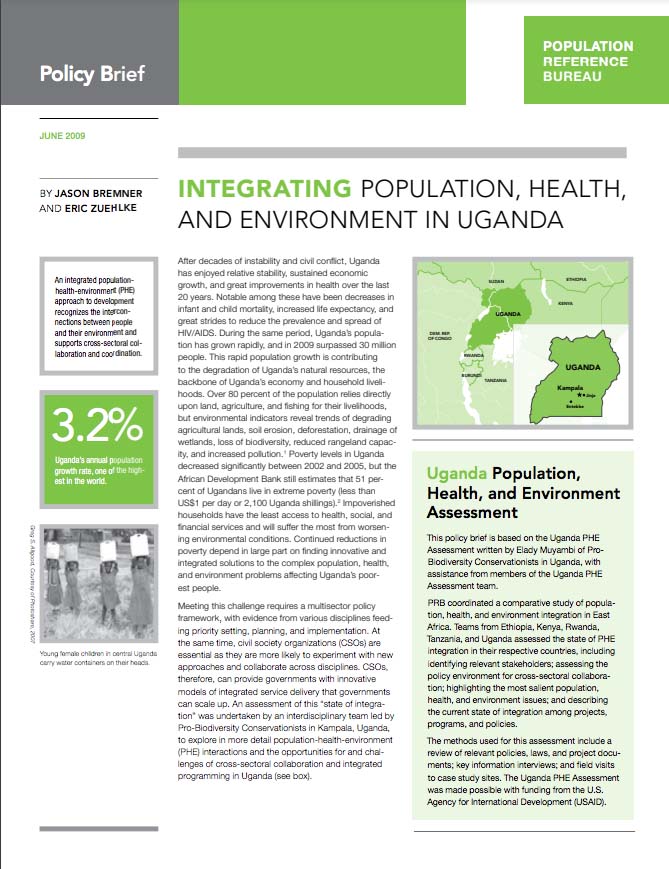
Integrating Population, Health, and Environment in Uganda
Date
July 13, 2009
Author
(June 2009) After decades of instability and civil conflict, Uganda has enjoyed relative stability, sustained economic growth, and great improvements in health over the last 20 years. Notable among these have been decreases in infant and child mortality, increased life expectancy, and great strides to reduce the prevalence and spread of HIV/AIDS. During the same period, Uganda’s population has grown rapidly, and in 2009 surpassed 30 million people. This rapid population growth is contributing to the degradation of Uganda’s natural resources, the backbone of Uganda’s economy and household livelihoods. Over 80 percent of the population relies directly upon land, agriculture, and fishing for their livelihoods, but environmental indicators reveal trends of degrading agricultural lands, soil erosion, deforestation, drainage of wetlands, loss of biodiversity, reduced rangeland capacity, and increased pollution. Poverty levels in Uganda decreased significantly between 2002 and 2005, but the African Development Bank still estimates that 51 percent of Ugandans live in extreme poverty (less than US$1 per day or 2,100 Uganda shillings). Impoverished households have the least access to health, social, and financial services and will suffer the most from worsening environmental conditions. Continued reductions in poverty depend in large part on finding innovative and integrated solutions to the complex population, health, and environment (PHE) problems affecting Uganda’s poorest people.
Meeting this challenge requires a multisector policy framework, with evidence from various disciplines feeding priority setting, planning, and implementation. Raising awareness of the links between population, health, and environment among policymakers, development planners, and project implementers; strengthening institutional capacity for cross-sectoral collaboration; and ensuring funding and support for rigorous interdisciplinary research and program evaluations are essential for successful cross-sectoral integration in Uganda. Progress in these areas will lay the foundation for more effective participatory development efforts that increase human well-being and sustain healthy environments.
This policy brief is based on the Uganda PHE Assessment written by Elady Muyambi of Pro-Biodiversity Conservationists in Uganda, with assistance from members of the Uganda PHE Assessment team.
Jason Bremner is program director of the Population, Health, and Enviornment program and Eric Zuehlke is an editor at the Population Reference Bureau.

 ">
">